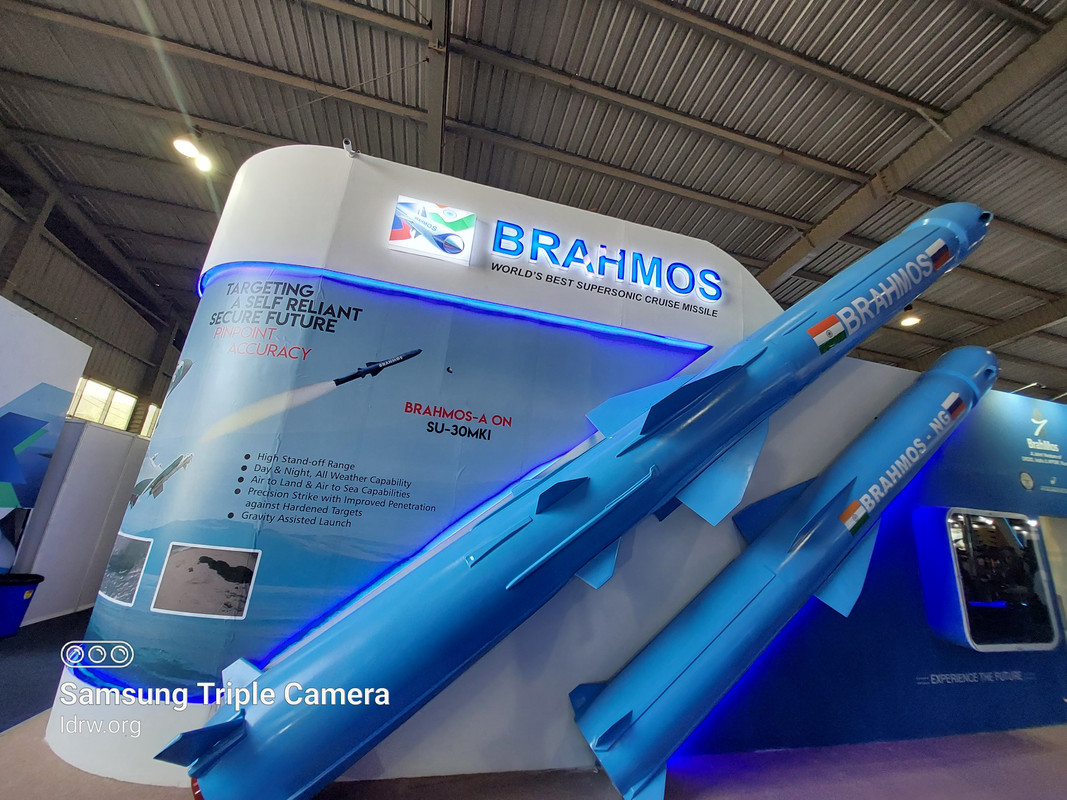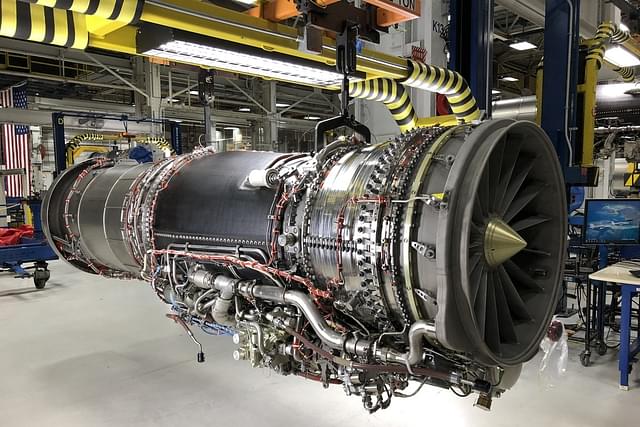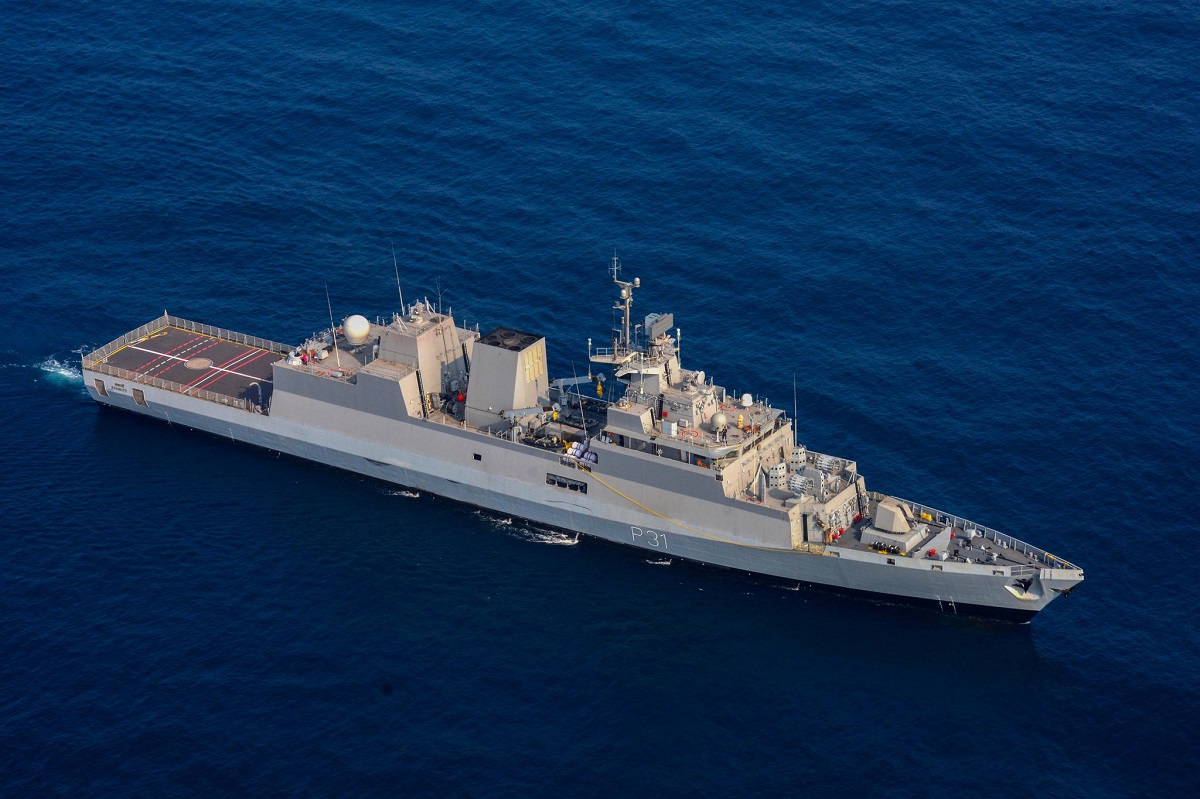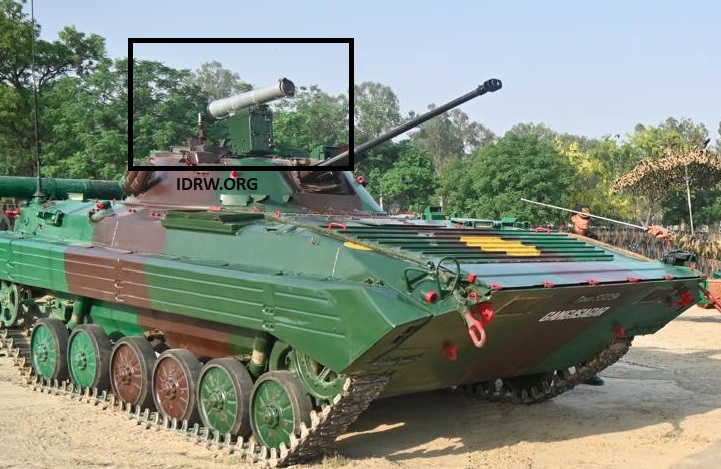Idrw Team
SOURCE: IDRW.ORG

The Indian Navy is gearing up to bolster its amphibious capabilities with a fleet of Landing Platform Docks (LPDs) built indigenously. This follows a Request for Information (RFI) issued in 2021. Two Indian shipyards, Cochin Shipyards Ltd (CSL) and Garden Reach Shipbuilders & Engineers Ltd (GRSE), have thrown their hats in the ring with their own designs. Additionally, L&T Shipbuilding and Mazagon Dock Shipbuilders Limited (MDL) have proposed designs based on collaborations with international OEMs (Original Equipment Manufacturers).
The LPDs envisioned by the Navy will boast an impressive capacity. Each vessel is expected to accommodate a crew of 540 sailors and carry up to 900 troops. These behemoths will measure approximately 200 meters in length and displace up to 8 meters of water when fully loaded. In terms of speed, a cruising speed of 14 to 16 knots is desired, with a remarkable range of 10,000 nautical miles at economical speed for extended deployments.
Continue readingSOURCE: IDRW.ORG

India boasts a vast and growing missile production capability. However, a critical question lingers: are stockpiles sufficient for a large-scale conflict? While some missiles have steady orders, others, particularly anti-tank and shoulder-fired variants, could be rapidly depleted in wartime. Traditional production methods might struggle to replenish stockpiles quickly, leaving a potential supply gap.
Here’s where 3D printing emerges as a game-changer. This technology offers a faster and more scalable solution for producing specific missile components, particularly rocket motors.
Continue readingSOURCE: IDRW.ORG

Krishna Defence & Allied Industries Limited, formerly known as Krishna Allied Industries Ltd, is at the forefront of India’s defence manufacturing landscape. The company is renowned for its specialized products, which play a crucial role in enhancing the operational efficiency and resilience of the Indian Navy and Army.
Krishna Defence offers a range of specialized products tailored for naval applications. One of their flagship offerings includes Bulb Bars and Steel Components, which are essential in constructing naval warship hulls. These components are not only lightweight and engineered for efficiency but also exhibit exceptional strength and durability, ensuring the robustness of the vessels.
Continue readingSOURCE: IDRW.ORG

India’s quest for a potent indigenous weapon system takes a significant step forward as the Short Range-Unmanned Aerial Vehicle-Weaponised (SR-UAV-W), also known as the “Archer,” prepares for crucial missile evaluation trials in the coming weeks.
The Archer has demonstrably passed its initial hurdle, completing flight demonstrations. This paves the way for the upcoming trials that will assess its weaponization capabilities.
Continue readingSOURCE: IDRW.ORG

The maxim “Artillery is the God of War,” attributed to Soviet leader Joseph Stalin, highlights the enduring importance of these powerful weapons. While India has made strides in modernizing its artillery in recent years, significant gaps remain.
For decades, India’s artillery modernization efforts lagged. However, the last decade has witnessed a renewed focus on this crucial aspect of military preparedness. In 2016, a landmark acquisition of 145 ultra-light M777 howitzers from BAE Systems marked a positive step. These highly mobile guns, perfect for India’s mountainous terrain, offer increased flexibility and firepower. The recent purchase of 100 K-9 Vajra self-propelled tracked howitzers from South Korea further bolsters the modernization effort.
Continue readingSOURCE: IDRW.ORG

Following the successful export of BrahMos supersonic cruise missiles to the Philippines, the Indo-Russian joint venture behind the weapon system is setting its sights on new partnerships. BrahMos CEO has expressed confidence in ongoing talks with several countries, suggesting potential deals could be finalized within a more realistic timeframe than the 2-3 years mentioned in some reports.
According to media sources citing the CEO, BrahMos is engaged in advanced discussions with at least two to three countries. While the official did not disclose specific names, there’s a strong possibility that at least one of these negotiations might culminate in a signed agreement in the near future.
Continue readingSOURCE: IDRW.ORG

Indian Armed Forces have a new contender in the tactical gear arena – Armasen Tactical. This high-quality manufacturer, known for collaborating with Special Operations Units, has offered its latest range to Indian troops.
Armasen Tactical highlights the S.F. R.I.G. Plate Carrier alongside their G.R.I.P. Combat Belt as the core of their offering. These are complemented by a variety of Utility and Ammo Pouches, creating a comprehensive combat ensemble.
Continue readingSOURCE: IDRW.ORG

In a landmark development following Prime Minister Narendra Modi’s third term in office, India and the United States have reinitiated discussions on the sale and transfer of technology (ToT) for the American General Electric F-414 (GEF-414) engine. This significant defense collaboration aims to enhance the indigenous production capabilities of India’s state-owned Hindustan Aeronautics Limited (HAL), positioning it as a local partner in this crucial program.
The proposed deal includes an 80% transfer of technology (ToT) to HAL, facilitating the local production of the GEF-414 engines. U.S. congressional approvals for this deal have been secured, paving the way for price negotiation committee talks, which are set to take place later this year in India.
Continue readingSOURCE: IDRW.ORG.

Following the triumphant launch of their Agnibaan’s “SubOrbital Technological Demonstrator (SOrTeD),” Agnikul Cosmos, a leading Indian spacetech startup, has set its sights on the future. The company’s founders have announced plans to begin development of the full-fledged Agnibaan launch vehicle within the next nine months.
Agnibaan is envisioned as a two-stage launch vehicle designed with high customizability in mind. This innovative design will allow it to cater to a wider range of customer needs. Notably, Agnibaan will be capable of carrying a payload of 300 kg to a 700 km orbit, making it a valuable asset for small satellite launches.
Continue readingSOURCE: IDRW.ORG

The Indian Navy is set to receive a major boost with the Defence Acquisition Council (DAC) approving the procurement of eight Next Generation Corvettes (NGCs) on June 6th, 2022. This project, estimated to cost ?36,000 crore (US$4.5 billion), will see the introduction of advanced multi-role warships built using indigenous technology.
In May 2024, the Navy issued a Request for Proposal (RFP) inviting participation from qualified shipyards. Four contenders are expected to vie for the contract: Mazagon Dock Shipbuilders Limited (MDL), Garden Reach Shipbuilders and Engineers (GRSE), Larsen & Toubro (L&T), and one undisclosed shipyard.
Continue readingSOURCE: IDRW.ORG

The Indian military has taken a step towards boosting soldier capabilities by procuring passive exoskeletons from Newndra Innovations, a Rajasthan-based company. These exoskeletons, named JaipurBelt and ArmMax, are designed to improve soldier productivity, endurance, and reduce the risk of musculoskeletal injuries.
“JaipurBelt provides support to a soldier’s back and spine, while ArmMax can support the back, spine, and arms,” said Ganesh Ram Jangir, CEO of Newndra Innovations. These exoskeletons can significantly increase a soldier’s weight carrying capacity by 5 to 35 kg, depending on the specific needs of the operation.
Continue readingSOURCE: IDRW.ORG

The Indian Army has recently showcased an upgraded variant of the BMP-2 Infantry Fighting Vehicles (IFVs), featuring a unique configuration designed in-house. The most notable upgrade includes the integration of a single-launcher 3rd Generation Anti-Tank Guided Missile (ATGM), providing a significant boost in firepower.
The upgraded BMP-2 IFVs now sport a single-launcher 3rd Gen ATGM, a testament to the innovative capabilities of the Indian Army’s in-house design team. This modification aims to enhance the vehicle’s anti-tank capabilities, ensuring that it remains a formidable asset on the battlefield. Additionally, a twin-launcher configuration for the ATGMs has also been developed, offering even greater firepower and versatility. This twin-launcher setup will be implemented in the interim, providing the Army with enhanced strike capabilities until a comprehensive upgrade is completed.
Continue readingSOURCE: IDRW.ORG

Traditionally, military ties between India and Germany have been limited. However, with a changing global security landscape marked by Russia’s war in Ukraine and China’s growing assertiveness, both nations are re-evaluating their defence partnership.
This renewed focus on collaboration comes after recent amendments to Germany’s defence export laws. This shift has opened doors for potential joint ventures between Indian and German defence industries.
Continue readingSOURCE: IDRW.ORG
)
A recent missile test by India has sparked discussions among experts regarding its potential impact on the country’s strategic arsenal. According to Matt Korda of the Federation of American Scientists, India’s successful test of a Multiple Independently Targetable Re-entry Vehicle (MIRV) equipped Agni-V MKII intercontinental ballistic missile (ICBM) earlier this year raises questions about the future of India’s submarine-launched ballistic missile (SLBM) program.
MIRV technology allows a single missile to carry multiple warheads, each capable of hitting a separate target. This development in India’s ICBM program suggests potential advancements in its SLBM technology as well.
Continue readingSOURCE: IDRW.ORG

In a significant stride towards self-reliance in defence technology, Dr. Samir V. Kamat, Secretary of the Defence Research and Development Organisation (DRDO), announced the development of indigenous fuel for the ramjet engine of the BrahMos missile and scramjet propulsion systems. This advancement is set to play a crucial role in reducing India’s dependence on foreign sources for critical defence technologies.
The development of indigenous fuel for ramjet and scramjet engines marks a pivotal moment for India’s defence capabilities. Ramjet engines, which power the supersonic BrahMos missile, rely on air-breathing propulsion technology, making them highly efficient at high speeds. Scramjet engines, a variant of ramjets, are designed for hypersonic speeds and are key to next-generation missile systems.
Continue reading